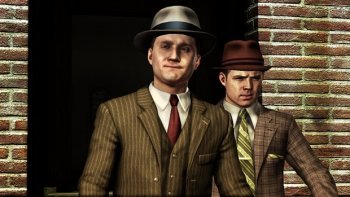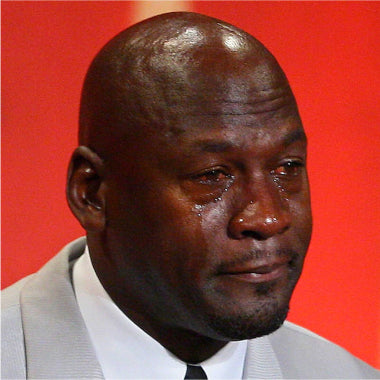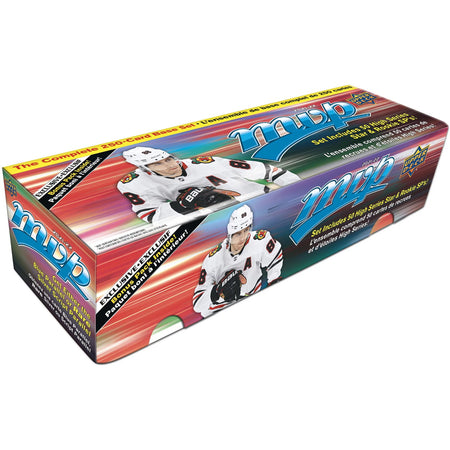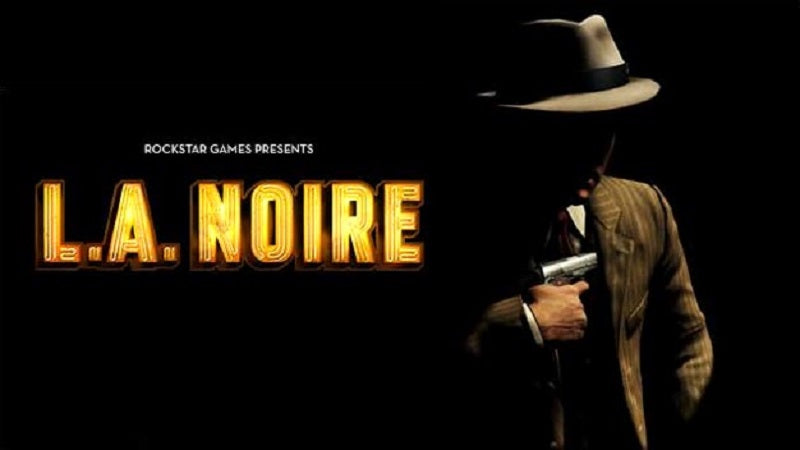Originally posted: June 11, 2011
“An Achievement in the Face of Regression.”
Cole Phelps: military vet, and one of the fastest rising employees of the LAPD. His persistence, dedication and solid detective work has earned him numerous commendations, and more promotions than a bosses barely legal mistress. You can say that Phelps is one of the more decorated and thoroughly acclimated protagonists in the genre. You can also say that Cole Phelps himself is a representation of the both the limelight and seedy sides of the Team Bondi developed and Rockstar published title, LA Noire.
As Cole Phelps, players will experience a myriad of cases, circumstances and tasks that would fray the nerves and demeanor of many veteran gumshoes in his position. From interrogating the most vile of slime, to chasing down mentally unstable individuals who think they are being controlled by martians, there’s rarely a dull moment to be had. Yet for some of the more remarkable achievements to the genre and to gaming as a whole, LA Noire seems to have quite a bit of unremarkability as well.
There are numerous achievements that Team Bondi should be applauded for, one being facial quality advancements. For over a decade gamers have witnessed a mixture of lackluster facial quality, not to mention improper vocal dubbing. For the most part, characters would have a number of predetermined motions for mouth animations that would try and replicate the innumerable words in a number of languages. While one would argue the acceptability of this practice overstayed its welcome years ago, especially with the console technology available, it continued to be a staple in how vocal representations were performed. Enter Team Bondi’s attempt to shake things up. Each person within the game world has a facial detail that’s almost reminiscent of an actual human being; facial wrinkles, authentic lip synced movement and legitimate emotion are present in every one’s face. Conversations between Phelps and his superiors, or Phelps interrogating a suspect provide raw emotion in a near perfect correlation between the tone of their voice and the facial representation of the emotion at hand. For the majority, this uncanny replication of emotion and quality can feel overwhelming, especially during cutscenes, where player involvement is nil, and the immersion is intensified. The visual quality as a whole is downright impressive, with landmarks and various stretches of roadways having a commendable amount of detail. It feels more like a late 40′s era world than other titles, such as Mafia II.

However, with the extreme quality overall, there are hiccups here and there. With the discs all installed onto the HDD, the opening credits had some severe frame rate hiccups, to the point where things were going at about four frames per second. The entire first mission suffered from quite a bit of stuttering as well, which did sour the initial impressions of LA Noire. As the game progressed, frame rate issues subsided, though on occasions, whether they are highly detailed areas or even walking through a grassy field while combing the area for clues, hiccups happened. There were also a few oddities with the facial animations where the entire head would slightly move in a direction in which the human head should not be moving, generally as the dialog portion was ending for one character, leading to a response from the next. There are also a couple of other nitpicking situations, such as Phelps blinking spasms and what looks like him sucking his lips in. They do not significantly deter from the stellar quality overall, though could have been cleaned up a little better.
The facial quality and emotion reading mechanics are also aided by some of the more pitch perfect voice acting I’ve heard in a video game. While there are some annoyances in terms of the volume of some interaction in certain situations, the dialog feels authentic and the delivery makes it feel like the experience is being unveiled from a motion picture, rather than an interactive form of media. The attitudes and tones of the late 40′s are relayed with a great amount of authenticity, from the lingo used on the job, to the racially insensitive manner that pops up on occasions. While the voices are impeccable, many of the sound effects sound stock, with explosions lacking that certain “oomph” and having more of a “boof” to them. The music that comes up does fit the time frame, though there’s nothing outstanding about the pieces available.
A modest portion of LA Noire revolves around your investigative prowess. Each storyline case is given to Phelps and his partner, which leads them to their arrival to the scene of the crime. Players will guide Phelps through the immediate area, combing for clues as carefully as they can, in order for the right pieces of evidence to see the light of day. As players level Phelps through various methods (from completing mission requirements with proper protocol and correct interrogation methods, to various sub missions that spring up while driving to certain storyline destinations) they gain Intuition points. These are limited within each mission, and can be utilized as a way of unveiling every piece of evidence in the immediate area, or eliminating one of the three responses when interrogating or questioning a person of interest. Some of the evidence pieces discovered might seem inconsequential to the case at hand, but could end up speeding the case along, solidifying a motive or incriminating a suspect, possibly giving the player a higher rating at the end of the mission.
The representation of a late 40′s Los Angeles is teeming with detail, as well as overall size. While the maps might not show it, there’s a lot of real estate to drive through in LA Noire. If you throw in the fact that the visuals can don a black and white color setting via options menu, then it really gives the impression that players are watching cases unfold and areas traveled in an aged format. There are some draw distance issues when driving, though they are never severe enough to hamper the scenery around the player.

Those familiar with just about any sandbox title from Rockstar will find comfort in the general controls of LA Noire. Team Bondi managed to mimic many of the Grand Theft Auto IV player mechanics, from the authentic walk speeds, to the authentic, though feels slow regardless, jogging speeds. Running doesn’t feel as fast as it should, though it’s still set at a tolerable speed. Vehicular controls on the other hand, feel really loose. I tried a couple of different controllers out, as one is a few years old, but both with the same end result. While they thankfully do not replicate vehicular controls from Grand Theft Auto III, the more rugged approach from Grand Theft Auto IV were not ported either. Driving at 80+ mph through the streets of Los Angeles can be a normal occurrence, especially with the ever annoying siren wailing. Waving in and out of moderate traffic can be pulled off without much of a hitch, but nailing a turn without hitting a usually unseen approaching vehicle coming at you, is a daunting task, unless the brake is hit hard. This can impact some of the car chases that occur as well, though not in such a severe manner that a mission will be lost if a player caused crash occurs.
Actually, losing at any point in LA Noire seems nearly impossible. There are instances in which Phelps can be killed, but the generous checkpoints will pop you back within seconds of these mishaps. One time I had to chase down a suspect that ran away from Phelps. I ran through the house, with Phelps shouting at the suspect to “stop!” and “you’re not going to get away with this!” The suspect bolts across the street, as Phelps yells once again for him to stop, only for Phelps to get hit by an oncoming car (scripted occurrence) and killing him. I restarted from the next checkpoint, basically 10 seconds before my death. There’s very little sense of a risk/reward system in LA Noire in general. If a player misjudges a suspect they are interrogating, they can simply quit to the game menu the instant your correct answer count comes up, reload the game and try again. While the more dedicated gamer wouldn’t stoop to such a method, the ability to all but erase your mistakes for the benefit of a better rank and more experience at the end of it all, says a lot about how easily manipulated the game can become. Similar can be said about other sandbox titles, but with an overwhelming emphasis built around creating a detective work environment in which there usually are not second chances at certain junctures, it does somewhat tarnish the experience set forth by Team Bondi.
While remaining on the subject of ease and a lack of risk and reward, gunplay in general is pretty much is a trivial encounter. The cover mechanics do feel a bit off when trying to disengage said cover, or trying to advance to the next set of barricades. They work in general, though there are numerous instances where Phelps can just stand out in the middle of the action and pick off perps when they poke around to take a shot at him. Even during the more daunting gun battles, taking cover isn’t necessarily essential, neither is the concept of hiding behind a wall. It also seems as if Phelps has unlimited bullets and can only equip something other than a handgun if he comes across it from a slain officer or suspect. It’s mildly disappointing, though again, LA Noire as a whole emphasizes its case solving first and foremost.
Then there’s the matter of Los Angeles its self. Again, gorgeous replication, sans some draw distance issues. But with all the beauty, there’s an obvious shallowness to it. As with Mafia II, there’s almost no reason to really go through the game with with a fine tooth comb, soaking up every square block available. Most of the time, Phelps is in a mission which, as Team Bondi would want you to believe, is the main focus. There are occasional moments when players need to race to a situation quickly, though those are few and far between as well. One time I had to race to a hotel across town to stop someone from possibly committing a crime. While en route, the radio dispatcher notified all cop cars of a ”211″ in progress (radio notifications open up optional missions that can be done during your main case.) I made my way to the 211 and took care of the situation, then continued back to the mad dash to the hotel. After the case was over, I was notified at the end of my report recap that had I arrived sooner, I would have been able to end things differently. While time is of the essence on certain occasions, most of the time it isn’t, yet there’s really no time to be sightseeing.

There’s also a distinct lack of activity in general. The forty radio dispatched missions seem like filler, trying to mask the fact that, like Mafia II, the game world, and the game in general, offers very little outside the main attraction, In some respects, it feels like LA Noire shares a lot more with Mafia II rather than Grand Theft Auto; the time periods are close by, the world begs to be explored, yet the developers never gave a true incentive to actively explore. Sure, with LA Noire, players can search for landmarks throughout the city, but why? Outside an experience gain, there’s no point. Even vehicular choices are negated. Why drive a taxi cab and have to deal with the traffic when you can stay behind the wheel of a cop car, siren wailing, and forcing traffic to literally part the concrete seas? Getting from one point to another is a cinch in a cop car, even with the unpredictability of turning at moderate speeds. Those forty side missions follow their own repetitious patterns as well: drive to the incident, from there most of these missions either require the player to engage in a shootout, chase someone down and end with a shootout, or engage in a shootout, chase the last guy down, and then shoot them. Sometimes a hostage is involved, or maybe even the one time where someone is about to jump to their deaths and Phelps must run up to them and stop them, but the tired and true pattern remains, and it’s really a downer. When it comes to LA Noire, it’s a distinct lack of depth to everything outside the gameplay mechanics for the main story that’s truly a shock.
It might seem that it’s not a game worth investing any time with, but that’s definitely not the case. While players will want to know more about Phelps and never be satisfied with what is revealed, solving cases and watching him get promoted to more high profile positions is definitely a thrill. If players put themselves into each case and try to read each suspects emotions and such, without quitting and reloading if they messed up, it’s a satisfying venture. The amount of audio and visual quality is more than apparent, and they help to really immerse players into each case given to them, despite some of the hang ups about gunplay, driving and the game world its self.
If you have about 18-20 hours to spare, LA Noire will provide an engaging detective experience that shines exceptionally well. If you’re looking for a game world filled to the brim with miscellaneous activities, and the time to freely engage in them, this is definitely not the game you’re looking for. At its best, LA Noire provides an innovative way of playing a video game, and one that can be quite gratifying at times. At its worst, it’s an overly linear approach to the sandbox genre, and would have been best served without an open world. While LA Noire feels more like Mafia II than Grand Theft Auto, there’s more than double the play time than Mafia II, and it feels like a justified $60 purchase in general. While there’s a minor incentive to replay previous stages to try and better the previous ranking, thanks to the lifeless game world, it’s just about a “one and done” experience, though one that does deserved to be played out, via Gamefly or retail purchase.
Rating: 7.5
Good news for those who haven’t had the chance to play LA Noire (and you definitely should) – a remastered version will be releasing on PlayStation 4 on November 14th. You can preorder this title here at Shopville Canada! It has its hangups, but it’s more than worth the price the remaster is asking for.

![Anuchard - Retro Edition - Premium Edition Games #18 [Nintendo Switch] Nintendo Switch Video Game Premium Edition Games](http://myshopville.com/cdn/shop/files/anucahrdstandardeditionpremiumeduitiongames_18nintendoswitchcover_1b9588a7-a871-40cb-8b37-7899a2ae1d4c.jpg?v=1713203974&width=450)
![1971 Project Helios [PlayStation 4] PlayStation 4 Video Game GS2 Games](http://myshopville.com/cdn/shop/files/1971projectheliossonyplaystation4ps4videogamecasecover.jpg?v=1687539142&width=450)
![2016 25-Cent Lenticular Coin: Batman vs. Superman Dawn of Justice [Memorabilia] Memorabilia Royal Canadian Mint](http://myshopville.com/cdn/shop/files/batmanvssupermandawnofjusticevcoincover.jpg?v=1699480822&width=450)


